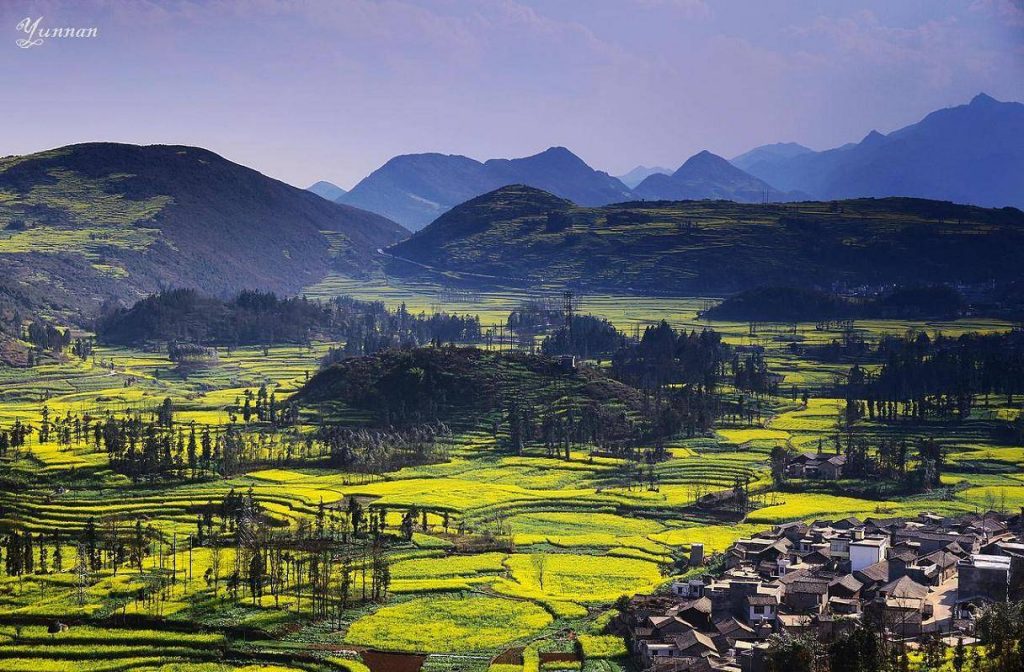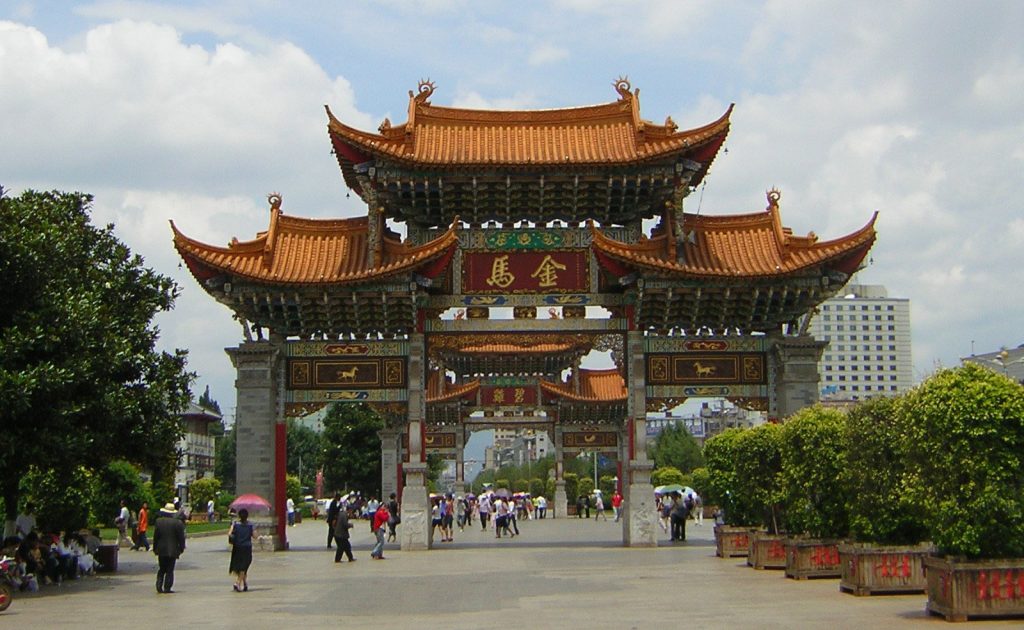Any Questions? Call: +86 (188) 168 93266
| Capital City: | Kunming |
| Area (Metro): | 394000 (2013) |
| Population: | 46 million (2010) |
| Coordinates: | 25°03′N 101°52′E |
| Chinese Name: | 云南省 |
| Highest Elevation: | 6,740 m (22,110 ft) |
| Province Website: | www |

Yunnan is one of the biggest provinces in the southwest part of China with borders with Laos, Vietnam, and Burma. Yunnan has for a very long been labeled the “Colored Clouds in the South. With an average altitude of about 2000 m, coupled with a climate that can be categorized as a monsoon plateau temperate tropical climate. It’s imposing landscape ranges from natural scenery, such as tropical rain forests, virgin forests, plateaus, hot springs, lakes, to glaciers and snow-capped mountains. It also has a large range of biodiversity both animals and plants which has earned it the “Realm of Animals” and the “Kingdom of Plants”. These names have helped boost the development of ecotourism in the province.
Yunnan is referred to in scientific circles as one of the sources and original starting points of humans, with the Yuanmu Man’s remains dated at 1.7 million years old found in Yunnan province. More so, there are numerous historic places all over the province that are sure to gather interest. Yunnan is home to twenty-six different ethnicity such as the Dai, Han, Bai, Hani, and Yi. This makes it the province with the highest number of nationalities in all of China. Every ethnicity consists of its own unique and special customs. As a popular tourist province, Yunnan can boast of 2 World Heritage locations which are the Three Parallel Rivers and The Old Town of Lijiang.
Yunnan is China’s most southwestern province, causing the Tropic of Cancer to run through the southern portion of the province. It has a 394,000 km² area which accounts for 4.1% of the total landmass of the nation. The northern portion of Yunnan province creates a portion of the Yunnan-Guizhou Plateau. Yunnan is bordered to the east by Guizhou Province and the Guangxi Zhuang Autonomous Region, the Tibet Autonomous Province to the northwest and to the north, Sichuan Province. The province also shares a 4060 km border in the west with Burma, in the south with Laos and in the southeast with Vietnam.

Yunnan’s climate is one that is generally mild with fair and pleasant thanks to it’s proximity to numerous mountain slopes that face south, receiving winds from both the Indian and Pacific oceans. While the province has a long growing period, it doesn’t have much arable land. Temperatures in January range from a low of 8°C to a high of 17°C, while July sees temperatures from 21°C to 27°C. Annual rainfall averages around 600 mm – 2,300 mm with more than half of the rainfall happening from June to August. Yunnan’s Plateau region see moderate temperatures, with the western region of canyons seeing its valley bottoms have a humid and hot climate while freezing winds are present at its mountaintops.
traveling to Yunnan province is best in autumn and in spring, particularly March to April & September-November. During the spring, March-May, the province has a daily temperature range from 12°C-20°C. Typically, May is the rainiest month of the year in Yunnan. The summer from June-August isn’t especially hot, while the winter season is not too cold. The harvest season in August comprises of mostly flowers and fruits, which would be the perfect time for tourists to get some.
Tourists can explore many Yunnan ethnic festivities during these periods in addition to numerous blossoms and fruits harvested around this time. For this reason, planning a trip at this period is sure to give you as much delight and enjoyment as possible.

Yunnan sees sunshine that is a bit too harsh in the day, so it is best to pack sunglasses and sunscreen. It is also important to drink more fluids, consume more fruits to better prevent dehydration.
Travelers who wish to head to Yunnan in March will have to wear thicker clothing such as cotton jersey, cotton trousers, and thicker coats. The city of Kumming has a temperature difference that widely differs, so it is best to pack sweaters and coats.
Yunnan in August is the rainy season, so tourists are advised to pack and wear thinner coats. Should one of the activities involve going to Lijiang’s Jade Dragon Snow Mountain, it is best to pack cotton padded or thicker clothing. Lijiang sees a wide temperature variation from the morning to the evening.
The combination of unique climatic and geological conditions, various ethnic groups with splendid culture and long history has culminated in the extremely wealthy tourism foundations in Yunnan. The entire province has 11 tour routes on the state level, 57 provincial and state scenic locations, 22 provincial and state forest parks, 5 nature serves, 9 provincial and state renowned cities of culture and history and 187 specially protected relic units. A group of tourism development areas have been tentatively created, of which some are modern glaciers, mountain gorges, plateau lakes, karst caves, stone forests, primitive forests, geothermal locations and volcanoes, tropical rain forest, historical sites, relics, traditional gardening, flowers, ethnic folklore and many more.

Owing to restrictions caused by geological conditions and transport, Yunnan which is a frontier and mountainous area, is an underdeveloped province in China. It has a total of 128 counties, with 76 of them being state level and impoverished. Over the years, Yunnan’s economic power has strengthened remarkably, with the pace of construction also increasing. The province’s GDP reached 245.88 billion yuan in 2003, which was an increase of about 8.6% on the figures of the prior year. There was a 5% increase in the primary industry while the secondary and tertiary industry both saw 10.4% and 8.6% respectively.
Urban residents saw their average disposal income rise in 2003 to 5.6 percent to 7,634.6 yuan, while rural residents saw theirs rise 5 percent to 1,697 yuan. There has been a constant rise in the population’s consumption of cars, housing, tourism, non-compulsory education, and computers. Furthermore, innovative achievements were had in social undertakings and communal development programs such as education, technology, and science, public health, reemployment social security etc.